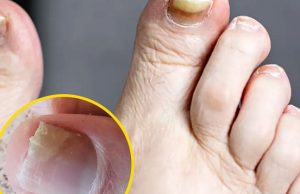
Used for millennia to define the basis of units of length, the human body has long served as a reference when tools such as the meter were not yet available.
Even today, we sometimes find ourselves in situations where this instrument is not at hand.
Fortunately, there are some tips to help you using simple and effective techniques.
The D system has more than one use when we find ourselves short of measuring instruments. Of course, these tips do not provide exact precision, but they are ideal when trying to obtain approximate measurements when you don’t have a ruler or tape measure on hand!
How to measure objects without using a tape measure?
Sometimes you need to measure an object without having a tape measure available. To achieve this, there is no need to resort to complicated mathematical operations. You just need to know the right tips to make your job easier.
Here are 4 to adopt now:
Tip number 1 – Measure by hand:
For this first tip, you just need to know the equivalences of the distance between your fingers. We must therefore remember that:

- 2.5 cm is the length of the first knuckle of your index finger
- 5 cm is approximately the length of your thumb
- 10 cm corresponds to the width measured on the knuckles of the hand, except the thumb
15 cm equals the distance between the tip of the thumb and the tip of the index finger with the hand spread - 23 cm corresponds to the distance between the tip of the thumb and that of the little finger when the hand is in the shape of a fist but these two fingers are spread apart at the ends
- 46 cm equals the distance between the elbow and the tip of the middle finger
- For palmistry enthusiasts, know that the length of your little finger could even reveal things about your personality!
Tip number 2 – Measure with a bill
It is possible to get an idea of the length of certain objects by relying on the dimensions of the silver notes. It may therefore prove useful to know that:

- A 20 euro note measures 13.3 x 7.2 cm
- A 10 euro note is equivalent to 12.7 x 6.7 cm
- A 5 euro note is equivalent to 12 x 6.2 cm
- If you are in a country using the dollar, note that these notes measure 15.6 x 6.6 cm.
Tip number 3 – Measure with an A4 sheet
With the exception of Canada and the United States, the dimensions of A4 format paper are universal and comply with the international standard ISO 216. This means that this rectangular sheet measures 21 cm in width and 29.7 cm in length. . Useful data when you don’t have a ruler or tape measure at hand, especially if you are a DIY enthusiast!

Tip number 4 – Measure with a credit card

If you don’t have tickets handy, you probably have a credit card in your bag or wallet. Please note that the latter can also help you when it comes to measuring an object. To do this, you just need to remember that the standard dimensions of a credit card are 8.6 x 5.4 cm.




















